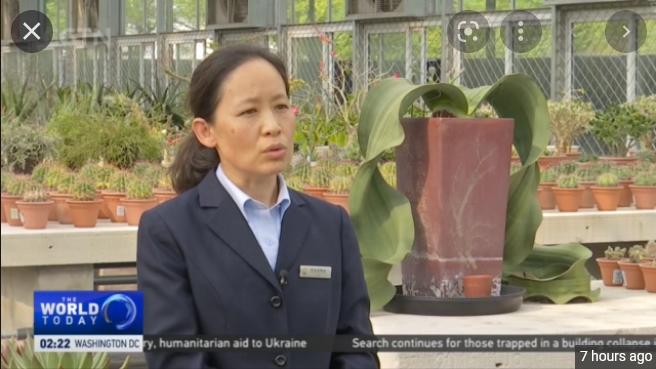
Africa-Press – Gambia. China’s first National Botanical Garden opened in Beijing last month. Visitors are having springtime fun in a park that has also embarked on a mission to educate people on conservation and the protection of biodiversity. Cen Ziyuan has more.
This plant is called the Welwitschia Mirabilis. It usually grows only in the deserts of south-west Africa.
With only two leaves, it can survive for up to 2,000 years by absorbing water from the air.
CHENG YAJING Senior Engineer, National Botanical Garden “When we began to introduce this plant to China, from planting the seed to growing it, we ran into many challenges. The survival rate from growing it from a seed is low. The temperature in the green room can be quite different from its natural habitat.”
This is just one of many plants being introduced to the garden. Some in the green room are local, but most are from overseas.
The primary goal of the botanic garden is to carry out what’s called “ex-situ conservation,” that’s conservation and maintenance of plant samples outside their natural habitat.
CHENG YAJING Senior Engineer, National Botanical Garden “It’s true that the living conditions in China are quite different to what these plants are used to. We introduce them to China, so we can develop an overall understanding of their nature and learn from the growing process.”
CEN ZIYUAN Beijing “The National Botanical Garden has more than 30,000 kinds of plants and five million representative specimens from five continents. Officials say the garden not only serves as a national plant diversity protection base but also helps visitors to develop a connection with plants while appreciating and learning about them.”
For humans to re-establish their connection with plants in an urbanized world, experts say it should begin with what we see on our plates, in other words, we must understand where our food came from.
WANG KANG Director, Science Popularization Museum “China has its own grain, but a few of them originate from overseas. Wheat is not Chinese. Rice is. The majority of greens are not local. They did not originate in China.”
The garden, inaugurated in mid-April this year, is a big attraction for families, with parents trying to satisfy their children’s curiosity about plants.
The exhibition is expected to change over time as more specimens and plants are introduced and become available.
WANG KANG Director, Science Popularization Museum “For example, we have a starch session on grains. One day, we might have Ensete glaucum from Africa, then you can learn about how Africans get starch from the plant. For example, potatoes. What do potatoes look like in America? A comparison might be able to attract visitors to have a better idea about such an important plant we consume every day.”
The tulip season has almost come to an end in Beijing. The garden is not only rich in color, but it can also offer great research opportunities and allow China to share its efforts in protecting biodiversity with the world. Cen Ziyuan, CGTN, BEIJING.
For More News And Analysis About Gambia Follow Africa-Press





